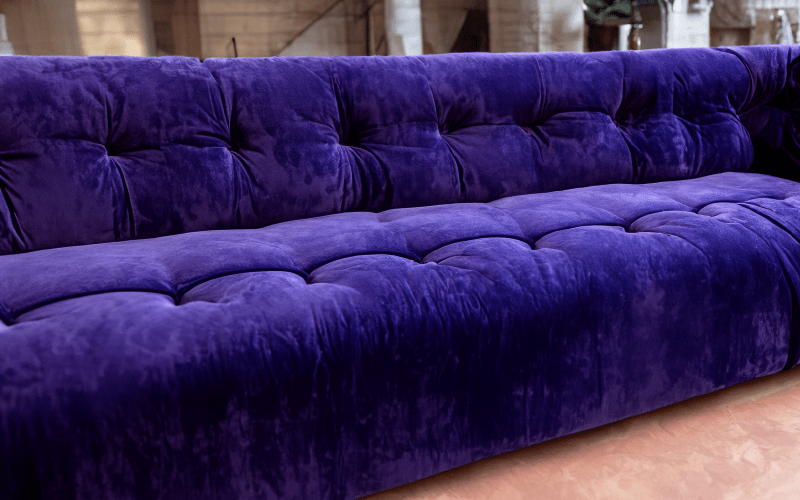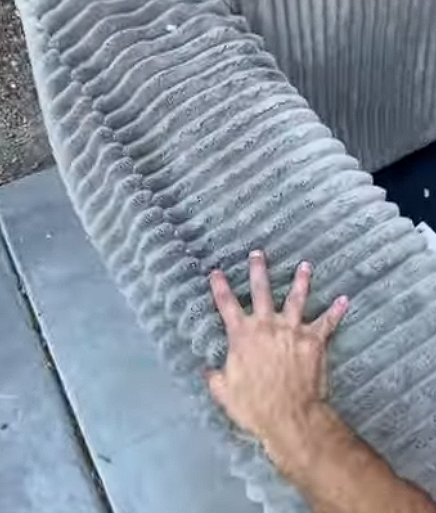Why Upholstery Absorbs Odors and How Freshness Impacts Your Space
Upholstery often absorbs odors from everyday use. These smells can come from pets, food, or spills that linger in the fabric. Over time, even regular use can lead to a buildup of odors.
This happens because upholstery materials trap particles and moisture, which create an ideal environment for unpleasant smells. Maintaining fresh-smelling furniture improves comfort and makes your living space more inviting.
Clean furniture also supports better hygiene, reducing allergens and bacteria. Tackling odors early prevents them from becoming deeply embedded and harder to remove.
This guide provides simple steps for freshening up your furniture. Each method uses common tools and products for effective and easy odor removal.
Understanding Odors in Upholstery and Their Impact on Your Home
Upholstery can hold onto odors due to its porous nature. Fabrics and cushions trap particles from food, drink spills, and pet accidents. These trapped particles break down over time, leading to unpleasant smells.
Persistent odors not only affect comfort but can also make a space feel unclean.
Maintaining fresh upholstery enhances your home’s atmosphere and promotes a welcoming environment. It also prevents the buildup of bacteria and allergens that can come with lingering smells. Fresh-smelling furniture supports a healthier living space and leaves a positive impression on guests.
This guide offers easy-to-follow tips for removing odors and keeping your furniture fresh.
Pinpointing Odors in Upholstery: A Step-by-Step Guide
Common Sources of Upholstery Odors
Upholstery odors often come from everyday activities and accidents. Food crumbs left behind can break down and cause unpleasant smells.
Pet hair, dander, and occasional accidents contribute to lingering odors as well. Spills from beverages or sauces can seep into fabric and create a lasting smell if not cleaned properly.
Environmental factors, such as smoke or musty air, may also cling to furniture. Identifying these sources is the first step in resolving the issue.
Knowing the origin of the odor helps determine the best cleaning method. Understanding what causes the smell prevents using incorrect treatments that may worsen the problem.
Why Identifying the Odor Source Matters
Pinpointing the exact source of an odor is essential for effective cleaning. Treating upholstery without identifying the problem may lead to incomplete results. For instance, using a surface cleaner might not address deep spills or pet accidents.
Different sources require different cleaning approaches, like baking soda for general odors or enzyme-based cleaners for pet stains. Addressing the cause ensures the smell is eliminated and doesn’t return.
Taking time to inspect the fabric and cushions thoroughly can save effort in the long run. Spotting the problem early also prevents odors from embedding deeper into the upholstery, making them harder to remove.
Effective Upholstery Cleaning: The Importance of Vacuuming First
Why Vacuuming is Essential Before Cleaning Odors
Before treating odors, it’s important to vacuum your upholstery thoroughly. Dirt, dust, and debris can settle deep into the fabric and cushion fibers.
If left untouched, these particles can trap moisture and bacteria, which worsen odors over time.
Vacuuming removes the surface dirt that could interfere with the effectiveness of odor-removal treatments. A clean surface allows cleaning products to work more efficiently, reaching deeper into the fabric.
Vacuuming also helps prevent dirt from pushing further into the material during the cleaning process. Taking the time to vacuum first can improve the overall outcome of your cleaning efforts.
Using the Right Attachment for the Job
To vacuum upholstery effectively, use the right tools. An upholstery attachment on your vacuum is designed to clean furniture without damaging the fabric.
These attachments have soft bristles that lift dirt without snagging or tearing delicate materials. They also help reach corners and seams where dirt often accumulates.
For a more thorough clean, use the nozzle attachment to focus on smaller, harder-to-reach areas like between cushions. Vacuuming regularly with the proper attachment ensures your furniture stays cleaner and odors stay at bay.
Natural Odor Removal: Using Baking Soda to Freshen Upholstery
How to Use Baking Soda to Absorb Odors
Baking soda is a simple and effective solution for removing odors from upholstery. To use it, sprinkle a generous amount of baking soda evenly over the fabric.
Focus on areas that tend to trap more odor, such as cushions and seams. Once applied, let the baking soda sit for at least 15 minutes to several hours, depending on the severity of the smell.
The longer it sits, the more effective it will be at absorbing odors. After the waiting period, vacuum the baking soda off the fabric thoroughly.
This process not only helps freshen your upholstery but also lifts dirt and debris.
Why Baking Soda Neutralizes Odors Naturally
Baking soda works by neutralizing acidic odors, which are often the cause of unpleasant smells in upholstery. The powder absorbs moisture and particles that contribute to lingering odors.
It doesn’t just mask the smells but actually neutralizes them, leaving your furniture smelling fresh. Baking soda is also safe for most fabrics, making it a great choice for everyday cleaning.
It’s an affordable and non-toxic solution, which is especially beneficial for households with children or pets.
Using baking soda regularly can prevent odors from building up, keeping your furniture fresh longer.
Refreshing Upholstery with a Vinegar and Water Solution
Simple Vinegar and Water Solution for Odor Removal
A vinegar and water solution is an easy and effective way to remove odors from upholstery. To make this solution, mix equal parts of white vinegar and water in a spray bottle.
Vinegar works as a natural deodorizer, neutralizing odors without leaving harsh chemicals behind. It also helps break down oils and stains, which can contribute to lingering smells in the fabric.
This solution is safe for most upholstery types and can be used regularly for maintaining freshness.
How to Apply the Vinegar Solution
Once the vinegar and water mixture is ready, lightly spray it onto the fabric, focusing on areas with the most odor.
Avoid soaking the upholstery, as too much moisture can lead to mold or mildew growth. After applying the solution, let the fabric air dry. As it dries, the vinegar smell will dissipate, leaving your furniture smelling clean and fresh.
This simple method is highly effective for mild to moderate odors and can be a quick solution for freshening up your furniture.
Using Commercial Odor Removers for Upholstery: A Practical Guide
Choosing the Right Commercial Odor Removers
Commercial odor removers are designed specifically for upholstery, making them an effective option for tackling tough smells.
These products are formulated to break down odor-causing particles without damaging your furniture. Many are available in sprays, foams, or wipes, offering flexibility depending on your needs.
When selecting an odor remover, look for one that’s labeled safe for the fabric type of your furniture.
These products are often more powerful than DIY solutions and can handle persistent odors that home remedies may not fully eliminate.
Why You Should Test Products on a Hidden Area First
Before using any commercial odor remover on your entire piece of furniture, always test it on a small, hidden area first. This ensures that the product won’t cause any discoloration, damage, or adverse reaction with the fabric.
Fabrics like velvet, silk, or leather can be more sensitive to certain chemicals, so testing first is crucial.
Apply a small amount to an inconspicuous spot, wait for it to dry, and check for any changes. If the test area looks fine, you can confidently use the product on the rest of your furniture.
Always follow the manufacturer’s instructions for best results.
Deep Cleaning Upholstery: Using Steam to Eliminate Persistent Odors
How Steam Cleaning Helps Remove Tough Odors
Steam cleaning is a powerful method for removing stubborn odors from upholstery. The heat from the steam penetrates deep into the fabric, loosening dirt, oils, and bacteria that may be causing the odor.
It also helps to lift and neutralize trapped smells, leaving your furniture smelling fresh.
Steam cleaning not only removes surface dirt but also sanitizes your upholstery, making it ideal for tackling persistent, deeply embedded odors.
It’s an effective solution for odors caused by pets, smoke, or heavy spills. This method works on a variety of fabrics, offering a deep clean without the use of harsh chemicals.
Renting or Hiring a Professional for Steam Cleaning
If you don’t have a steam cleaner, consider renting one or hiring a professional cleaning service.
Steam cleaners are available for rent at many home improvement stores, making it easy to access the equipment when needed. If you prefer not to do it yourself, professional cleaners have the expertise and equipment to handle the job efficiently.
Hiring a professional can be a time-saver and ensure the best results, especially for large or delicate furniture.
Whether you choose to rent or hire, steam cleaning is a highly effective way to address tough, lingering odors in upholstery.
Maintaining Fresh Upholstery: Long-Term Tips for Odor Prevention
Using Fabric-Safe Fresheners to Maintain Freshness
To keep your upholstery smelling fresh, consider using fabric-safe fresheners regularly. These products are designed to be gentle on fabrics while providing a long-lasting, pleasant scent.
You can find sprays, powders, or even wipes that help prevent odors from building up. Choose products that are free of harsh chemicals to protect your furniture and ensure the air remains clean.
Fabric fresheners are a quick and easy way to maintain a pleasant smell between deeper cleaning sessions.
Keep Furniture in Well-Ventilated Areas
Proper airflow is essential for preventing odors from lingering in upholstery. Keep your furniture in well-ventilated areas to help moisture evaporate and reduce the risk of musty smells.
Open windows or use fans to encourage air circulation, especially in rooms that tend to get damp. This simple step helps keep your furniture dry and fresh, minimizing the chances of mold or mildew forming.
Adequate ventilation also allows cleaning solutions to work better and faster.
Keep Your Upholstery Fresh with These Simple Odor Removal Tips
Recap of Key Steps for Odor Removal
To keep your upholstery smelling fresh, start by identifying the source of the odor. Vacuuming thoroughly helps remove dirt and debris before tackling smells.
Baking soda is a natural, effective way to absorb odors, and a vinegar and water solution can neutralize tough smells.
Commercial odor removers are also helpful, but always test them in a hidden area first. For deep odors, steam cleaning provides a thorough, lasting solution.
Lastly, maintain freshness by using fabric-safe fresheners, ensuring good ventilation, and vacuuming regularly.
Act Quickly to Preserve Comfort and Cleanliness
When odors arise, it’s important to act quickly to preserve the comfort and cleanliness of your furniture.
The longer odors linger, the harder they are to remove. By addressing the problem early, you can prevent smells from embedding deeply into the fabric, which may require more intensive cleaning.
Prompt attention to odors keeps your furniture looking and smelling fresh.

















